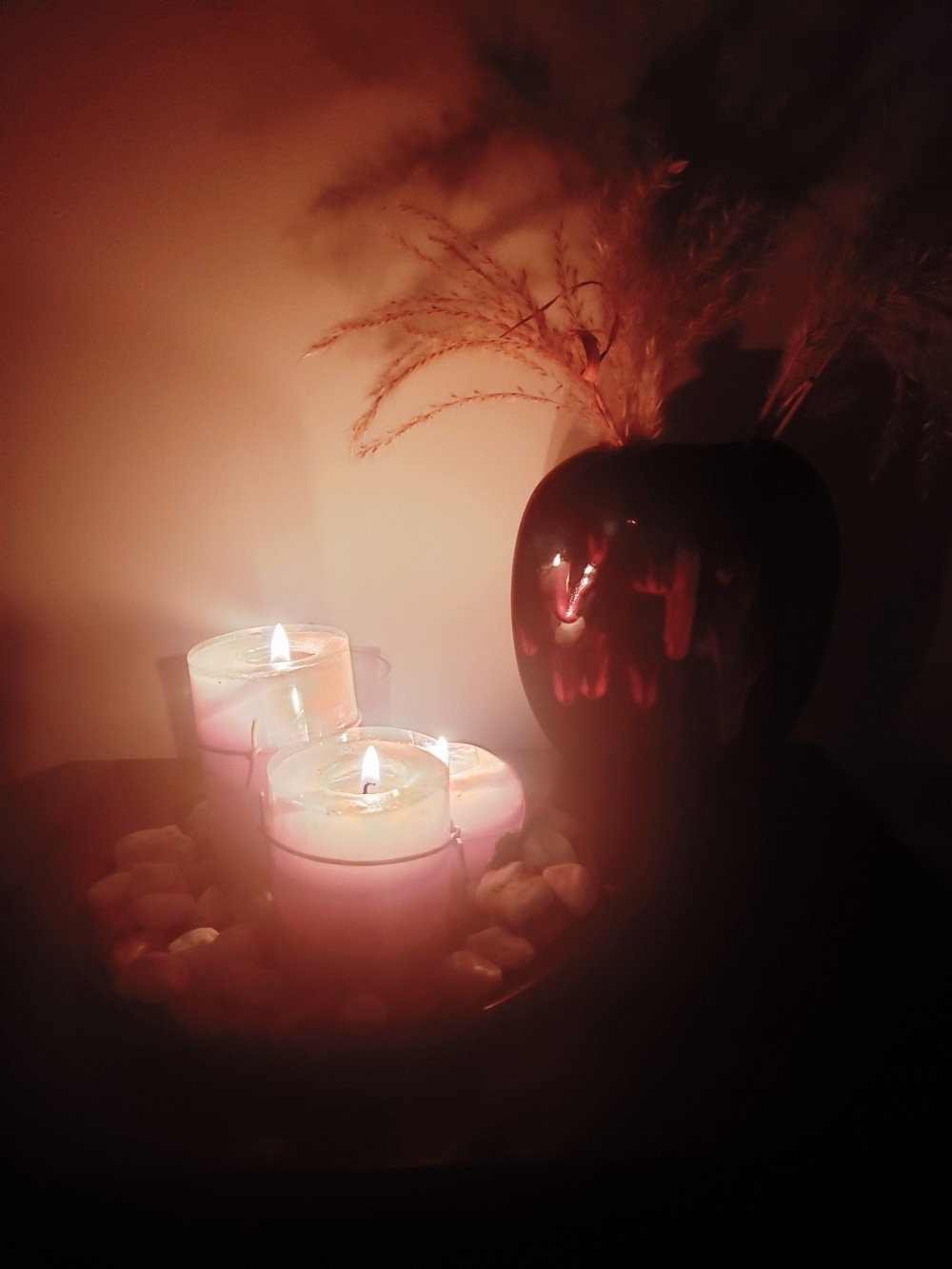Technique is the foundation of everything that we do. To perform a scientific experiment, we need technique. To take a good photograph, we need technique. To create a painting or a song, we need technique. But technique is also present in every aspect of our everyday life. To drive we need technique. To cook we need technique. To walk we need technique (our body making an infinite amount of tiny adjustments to keep us walking straight). Technique is to life what the skeleton is to the body, and just like the skeleton, it is hidden. We do not see the technique, we see the painting. Can your camera capture the technique, and reveal it? As part of the 6th annual ScienceFest conference, and inspired by the SPACE theme of Technique, students in all programs were invited to interpret this theme through photography.
Photographs will be judged on scientific value, aesthetic and relevance to the theme. A jury will examine the photographs and select the winners (Jury Prizes). The public will also vote for the best photograph to select the People’s Choice Award.
Use the form at the bottom of the page to vote for your choice of best photograph. Voting will be open until May 25, 2020.
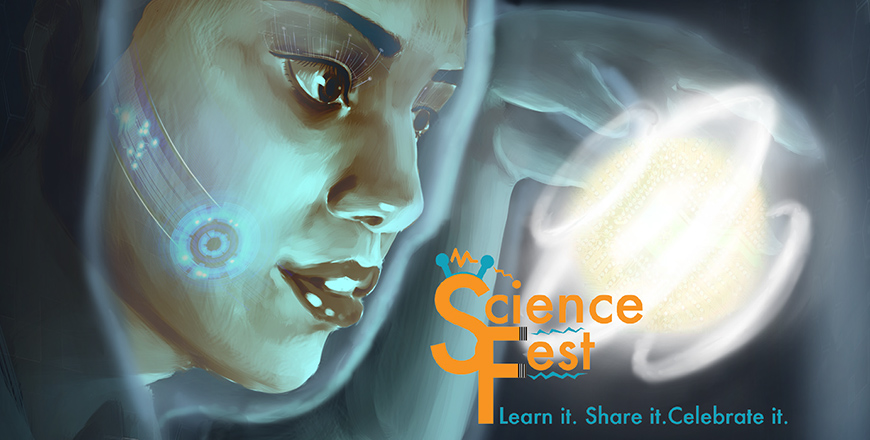
While taking pictures of nature’s intriguing phenomena, I came upon this yellow-ish stuff on the bark of a tree, known as lichens. Lichens on trees are the result of a symbiotic relationship between fungus and algae. The fungus naturally grows on the tree and produces moisture, which is what feeds the algae, whereas the algae produces food from sunlight in order to feed the fungus. This phenomenon is meaningful, not only to sustain the life of these organisms, but to serve as a reminder that we, humans, must also live symbiotically with each other, to look after each other, to support and help each other, and to give for the sake of giving, especially during difficult times.
Camera Type: Mobile
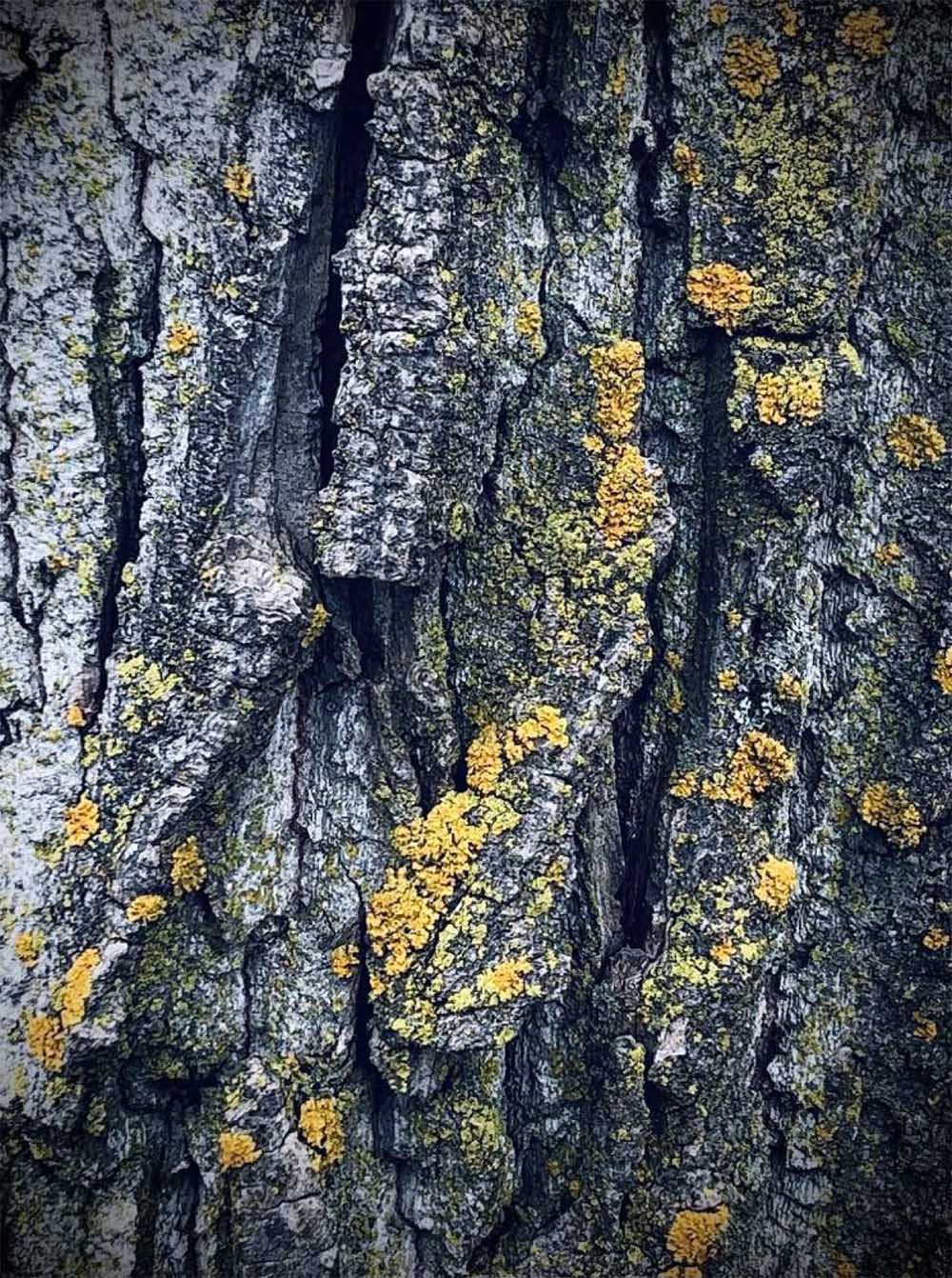
This entire image is the product of technique. From the carefully rolled pine trees, to the very own stone building and even Edison’s brilliant invention – now technically adapted. But most importantly, I dare say, is the photo itself made with a 35-mm film camera. Spot on settings and my careful development of the film make tangible what was only in my head, since it’s impossible to instantly see the image taken. It wasn’t enough to have a camera, the masters of old had to understand light and all the chemical processes associated with it. Perfect marriage of science and art.
Camera Type: 35 mm film camera
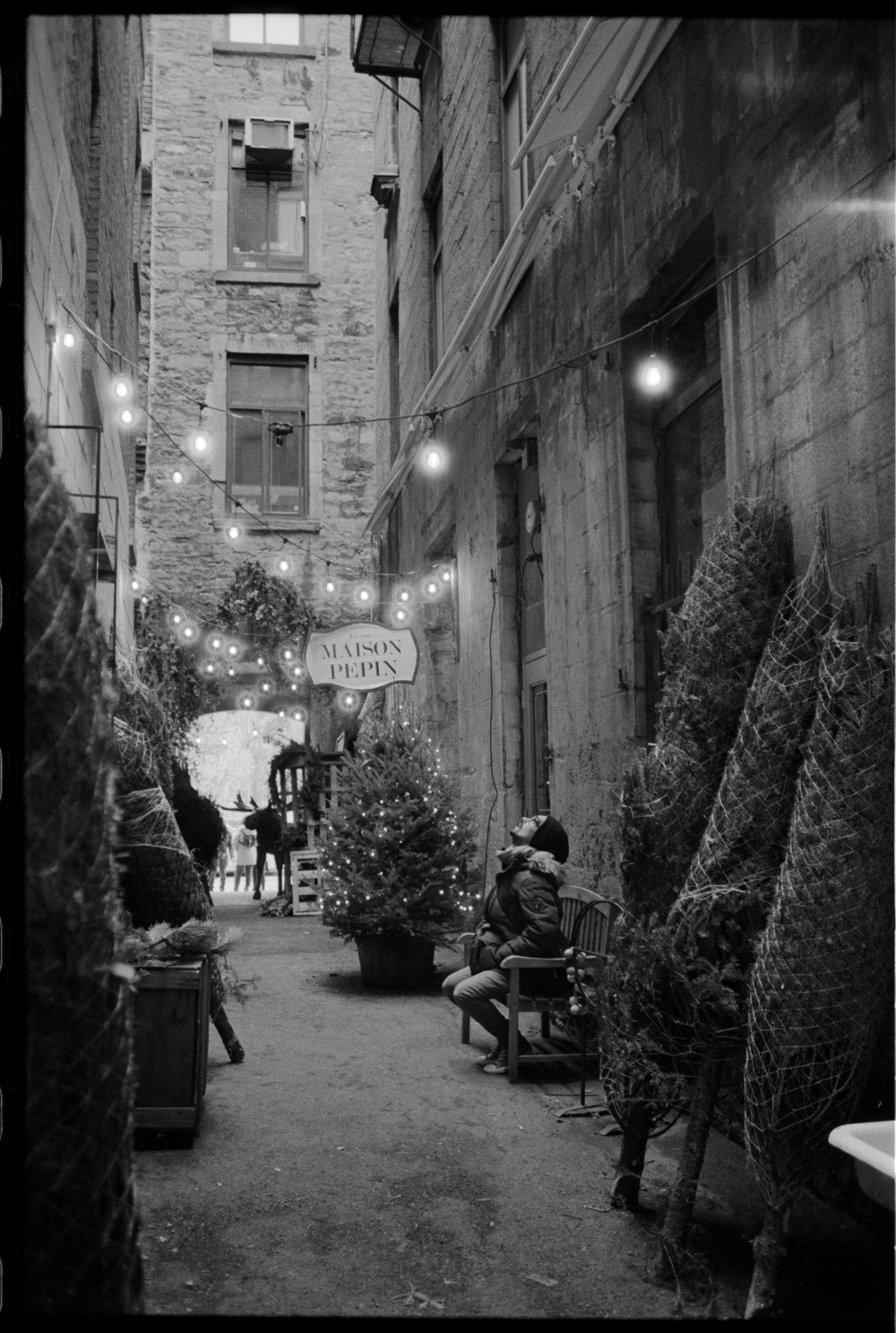
This skier demonstrates a textbook worthy skate skiing technique: his shoulder, hip, knee and foot are all in line; he leans slightly over his ski while the ski itself is tilted the smallest bit inwards keeping his balance. Heat released by the friction between the snow and the skis melts the snow which, because of the properties of water, sticks to the skis. Too little or too much water and the skier is slowed down. Wax is applied to the bottom of the ski to create the perfect amount of friction where the skier can just float above the snow.
Camera Type: Mobile
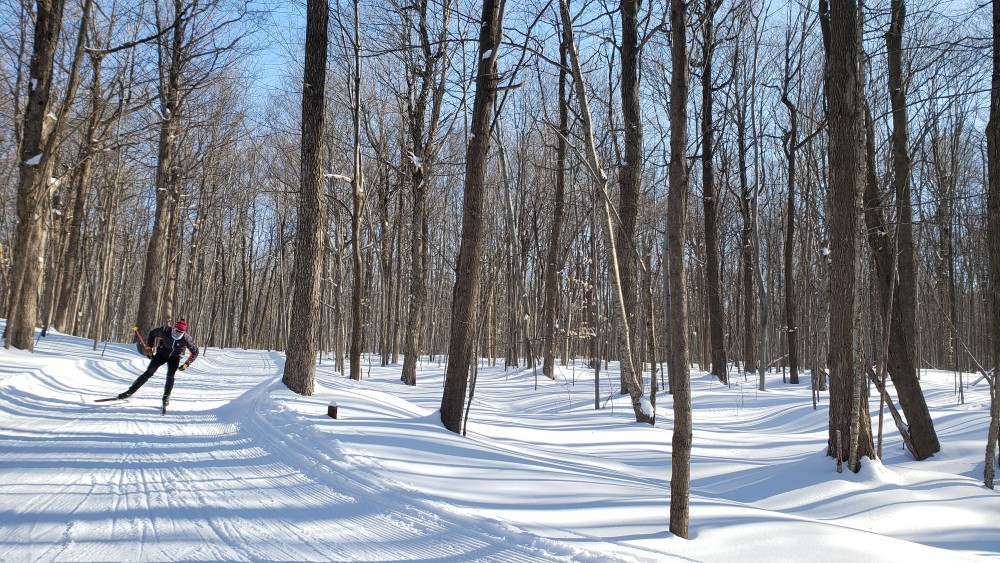
This stingless bee flies from flower to flower collecting pollen in its hind legs. If the bee has no stinger, how does it defend its hard-earned pollen? This bee’s nest is usually found in the center of strangling fig trees which descends its roots over a different tree “strangling” and leaving it to decompose to a hollow center. The bees take advantage of this by building their nest inside the tree and further expand by removing the soft inner tissue of the tree. This technique, developed through natural selection, allows the bees to have a defendable nest with small openings.
Camera Type: Mobile
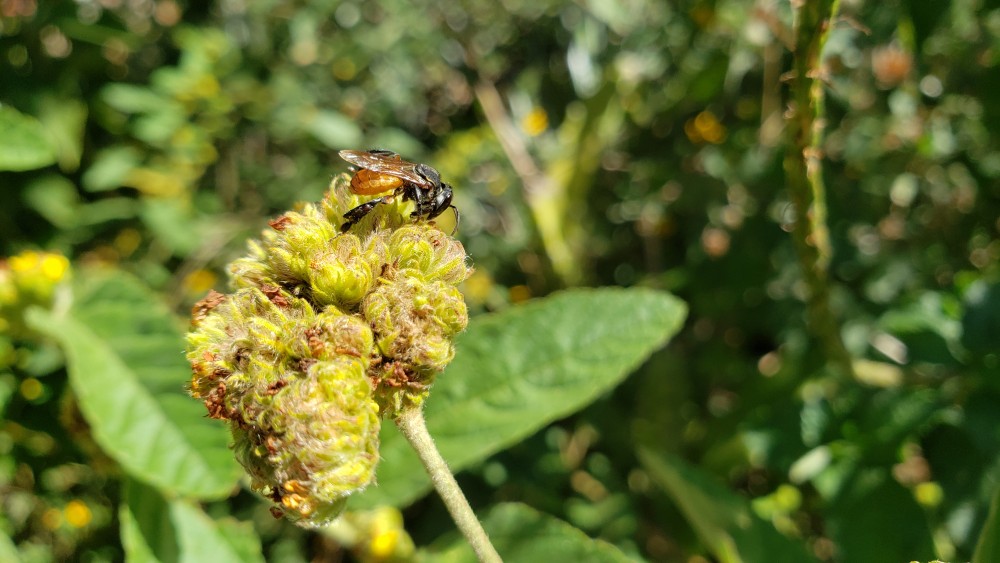
The usual idea of a red-eyed tree frog is bright red eyes, orange fingerpads and vibrant blue sides. Maybe that is why some are reluctant to believe that this frog is not toxic and it’s main defense is actually camouflage. This picture shows how the frog tucks its bright legs under its belly and closes its eyes making it easy to walk right past this beautiful creature. When disturbed, it quickly opens its eyes momentarily stunning the predator, then it flashes its bright underside as it flees, confusing the predator even further.
Camera Type: Mobile
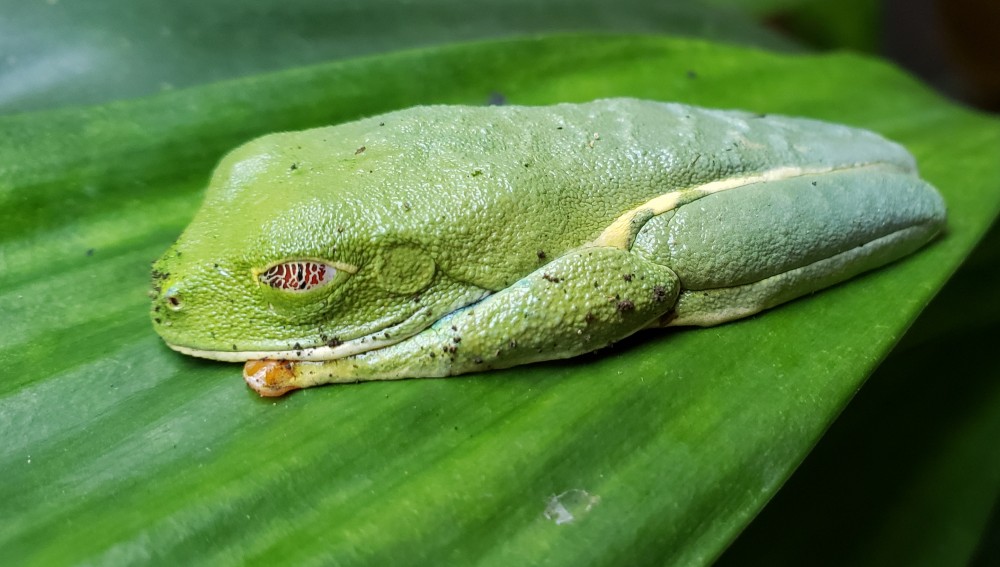
Frost deposition on the eyelash is a thermodynamic process that comes from the quick change in temperature. In this picture, the warm breath containing water vapour, moving up the neck warmer and being released through the opening near the eyes, comes into contact with the cold ambient temperature, causing the water vapour to lose its thermal energy and become solid over a short time period.
Camera Type: Mobile
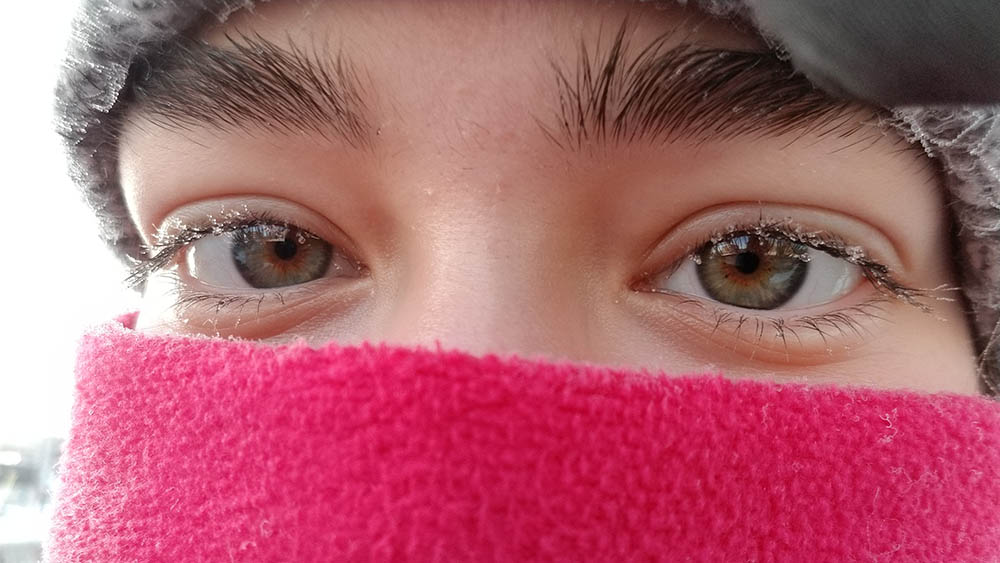
This species of Caiman is known as the “yacare caiman” and they can grow up to 2-3 meters long. They feed primarily on aquatic animals, but also on the occasional land vertebrate. In the picture presented, the caiman can be seen sitting in the sun, which it must do to digest food because they are cold-blooded. It can also be observed that its mouth is open which is speculated to be used as a way of cooling down, but it’s hypothesized that it may have social applications as well.
Camera Type: Nikon P1000
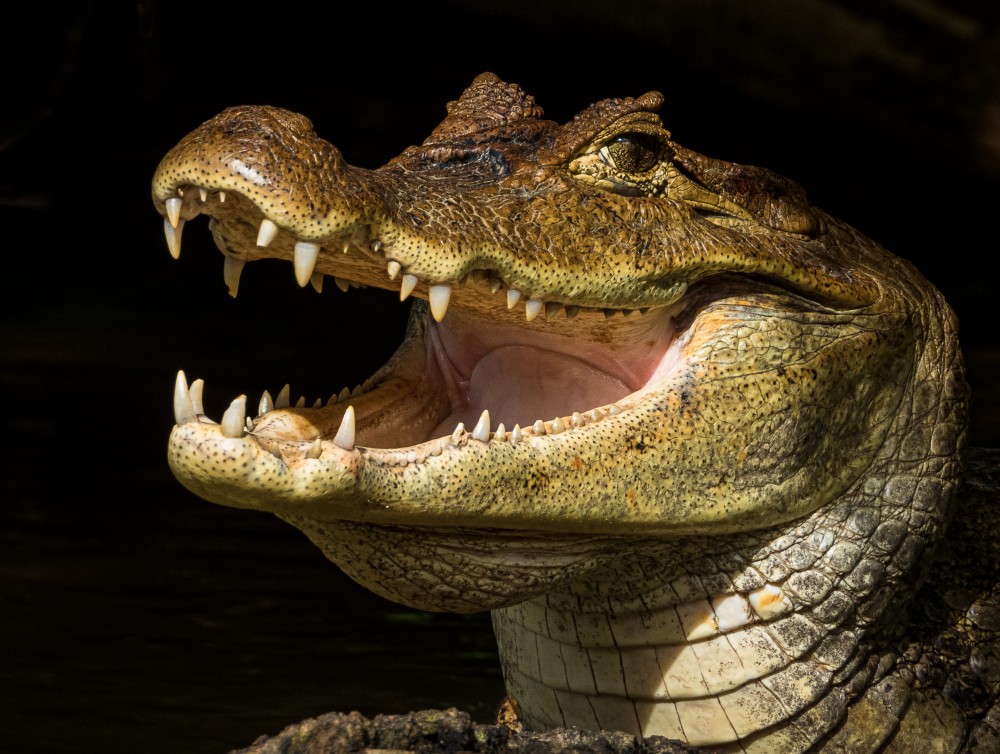
Exploring an entrancing, muddied perspective of the city through optical limitations imposed by astigmatism.
Camera Type: Mobile
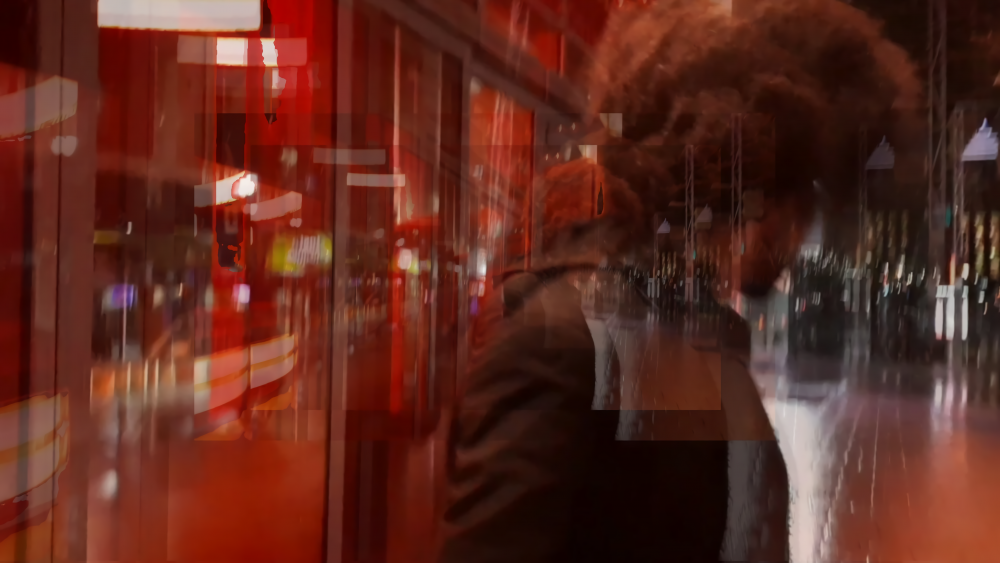
One foot on top of the skateboard. Second foot following the first step. Stabilize the skateboard.
Bend down the knees.
Contract the leg muscles.
1, 2, 3,
Seconds.
Propel your body up in the air.
1, 2, 3,
Milliseconds.
How is the air up there?
Keep eye contact with the skateboard. Land your feet on the deck.
Smile because you succeeded,
Or not.
And lastly, don’t forget,
Always save the beer.
Camera Type: Canon Sure Shot Owl PF | 35mm film
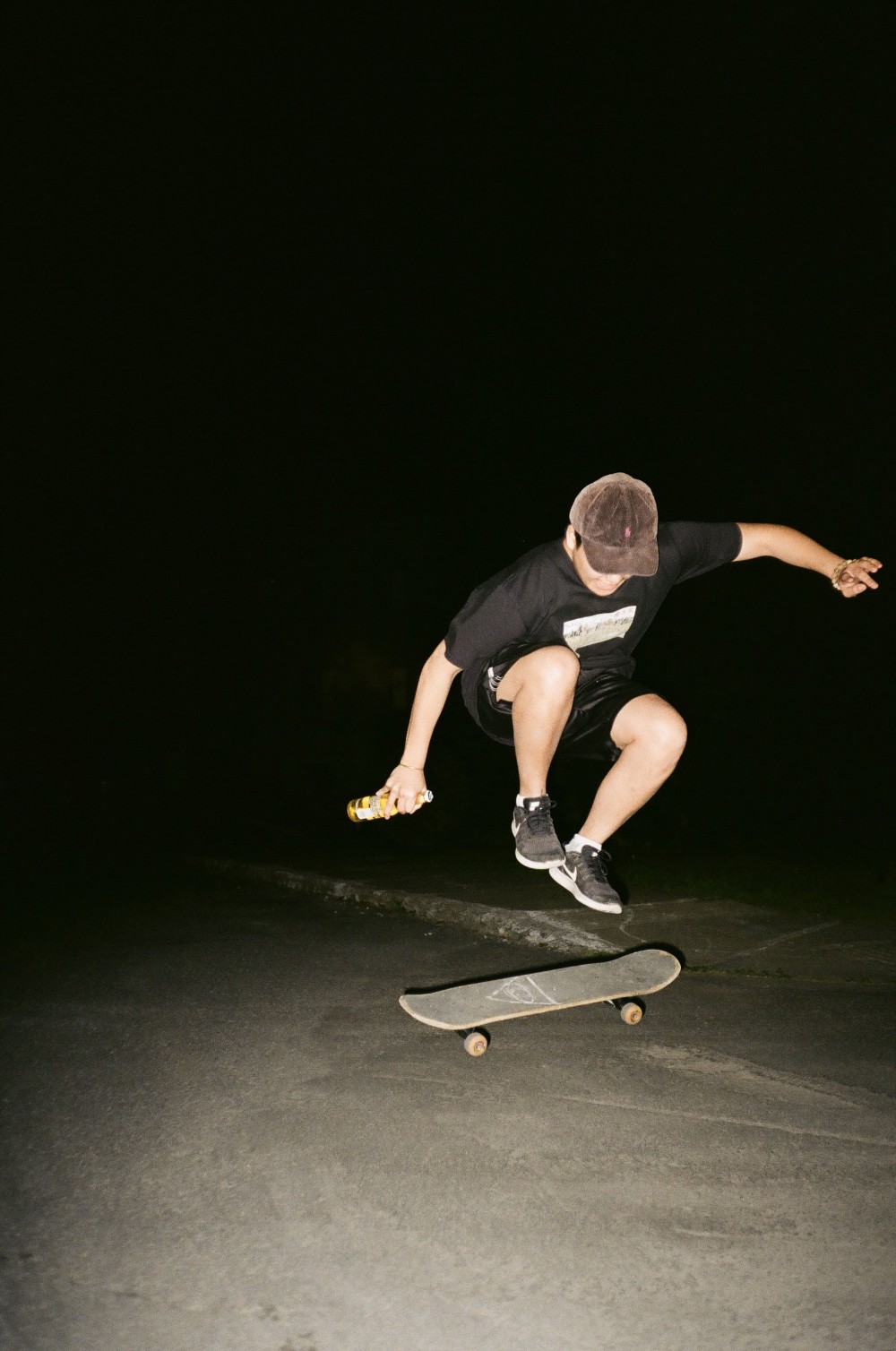
Everyone has their own technique of expressing their feelings towards their city. In Cuba, where the technology is in the age of lagging science and technology, people can still show the foreigners what the city looks like in their eyes. This is how does a busker sing “Havana oh nana”.
Camera Type: Nikon D7100
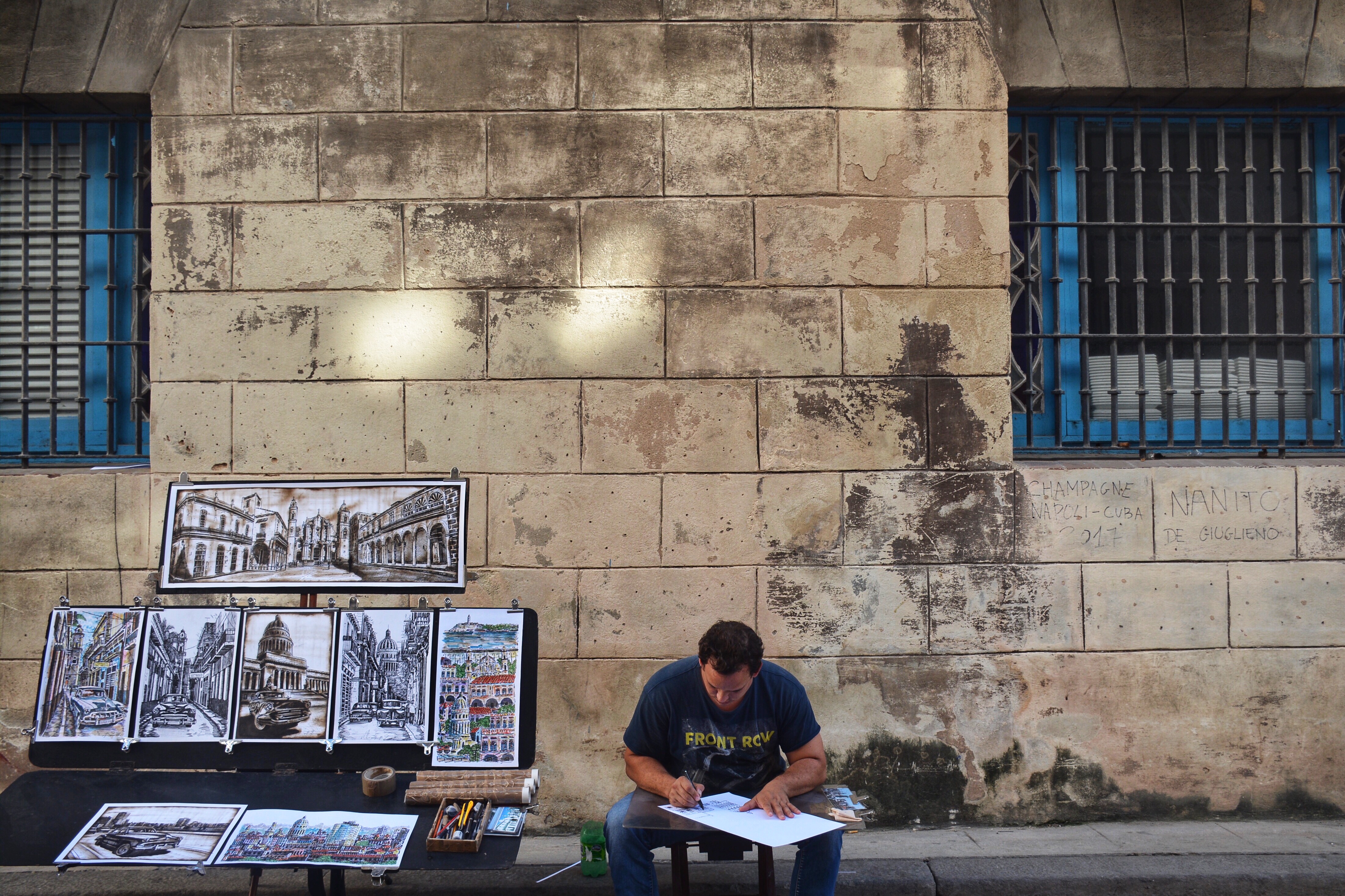
Between them, perennial crops, such as these crocuses, and annual crops encompass most plant species. They have the same life cycle, yet perennials have a rootstock that remains and grows over successive years. These root systems improve the structure of the soil. They draw up moisture and can access nutrients that are out of the reach of their annual counterparts. They save energy spent in replanting, avoid the environmental hazard of monoculture, and flourish in symbiosis with other plants. Planting more perennials can help humanity and the Earth by providing reliable food production, sequestering carbon, and enabling ecosystem development.
Camera Type: Mobile
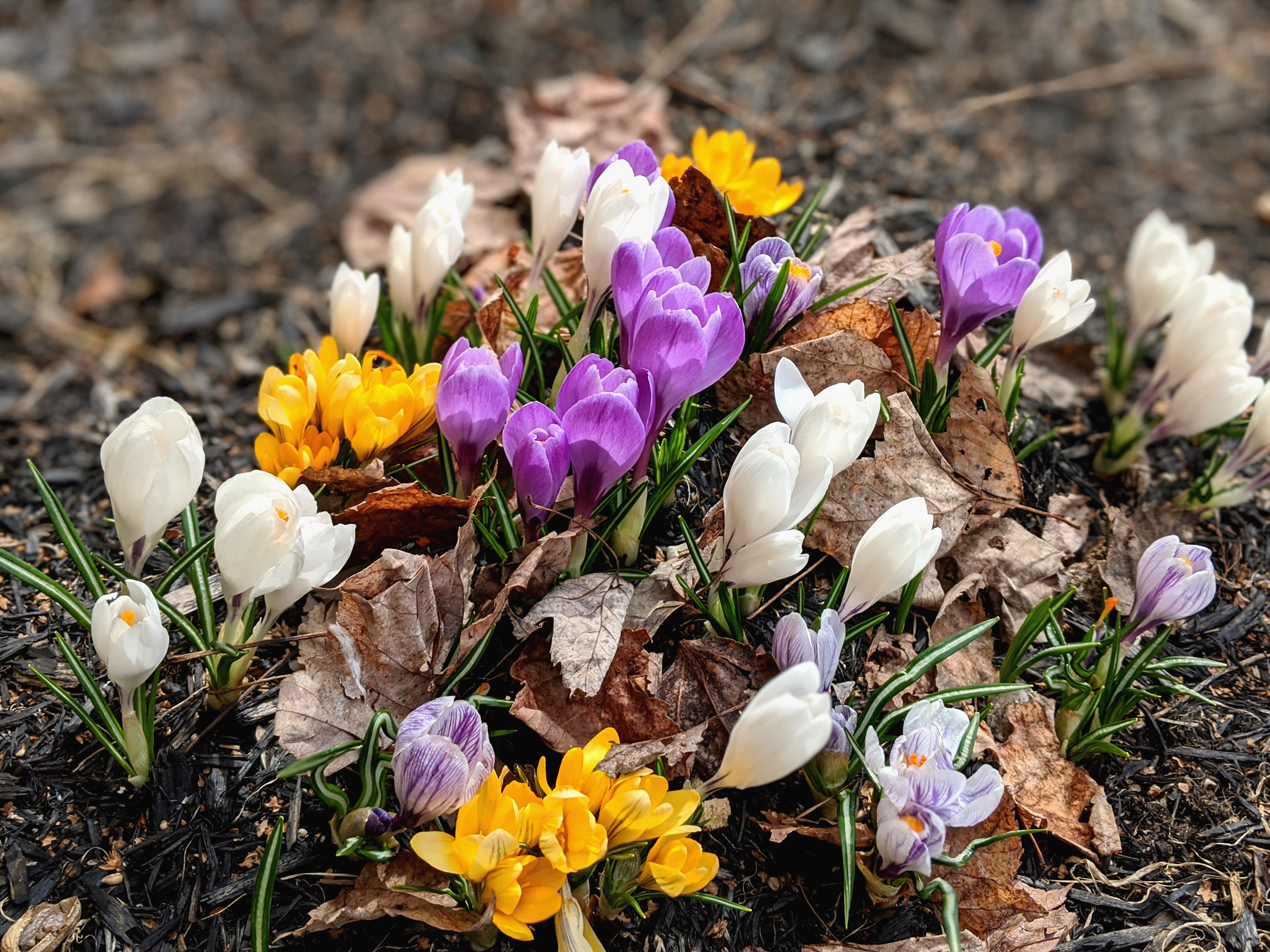
My vision was to bring to light the beauty and skill of that which we may not think of. Taking this photograph, I tried to get as close as I could to this tree trunk in order to show the viewer what is called a symbiotic relationship. The algae and fungus (yellow and green) work together, each making use of their own capabilities and depend on one another to survive. While the fungus provides food, the algae provides a suitable environment for growth. Imagine what could happen if we too used our skills to help one another?
Camera Type: Mobile
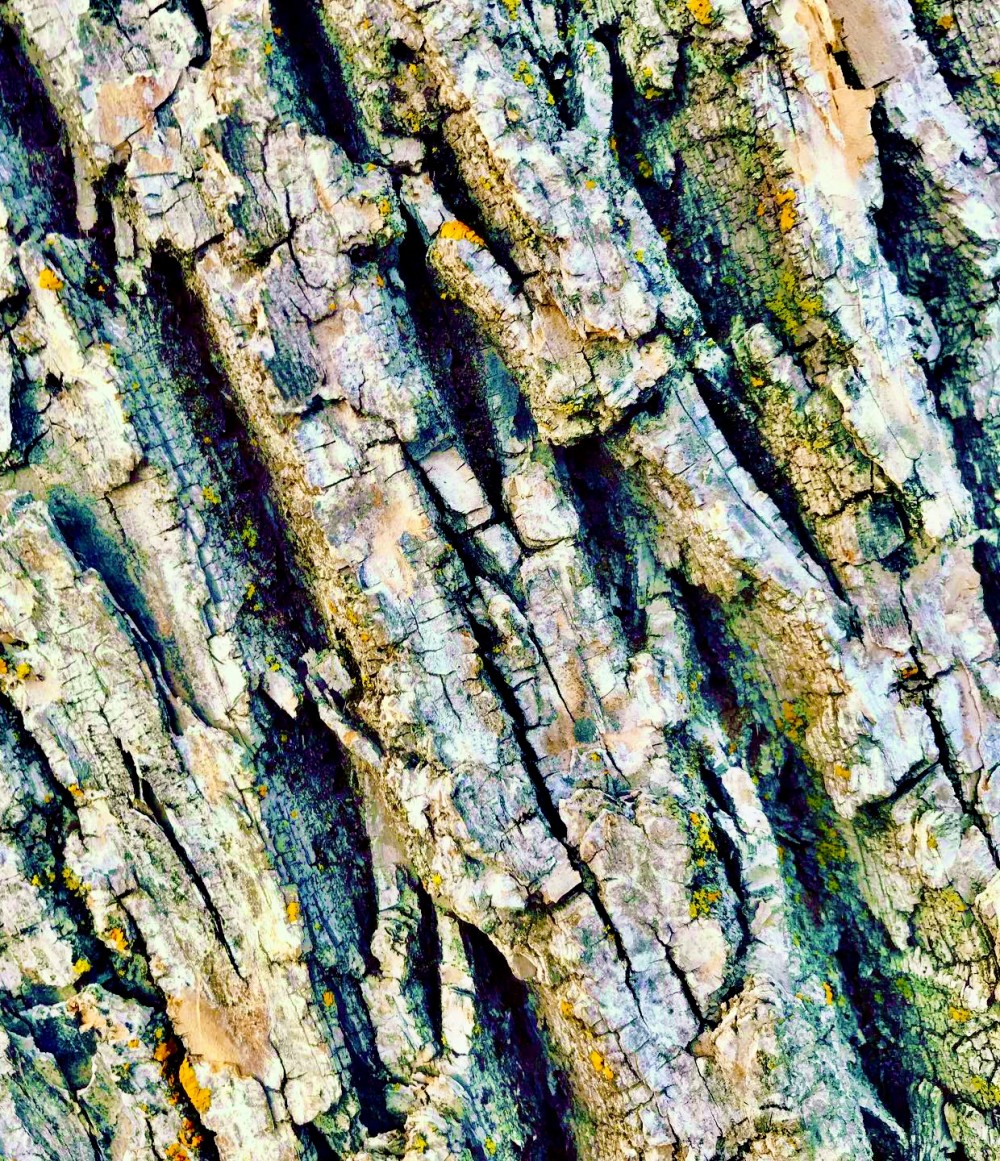
This is a branch of a Benjamin plant that I have at home. Both of the leaves have received the same care, soil and amount of water, but the one that is still living was in the light. This is a simple observation that applies to every being on Earth and it is a lesson for the future of our planet. The only unlimited energy we can use to stay alive is solar. So, let’s be in the light and stay alive!
Camera Type: Mobile
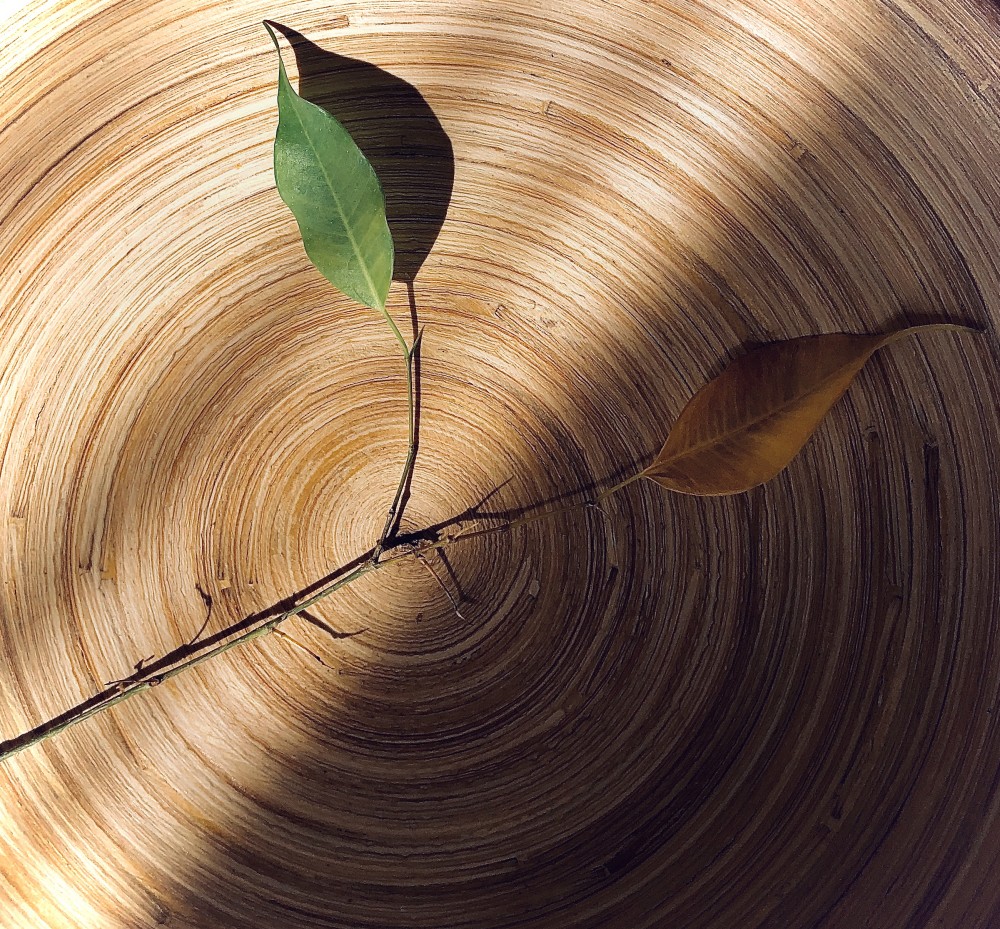
This simple experiment perfectly illustrates how completely different materials can make for both fun and aesthetic interactions. Indeed, this experiment relies on how the sharp edge of the pencil progressively stretches the membrane of the bag made of polyethylene, a polymer with elastic like properties which tightens around the pencils thus inhibiting any water from leaking. In essence, this picture captures how a thoughtful combination of different forces can lead to great results.
Camera Type: Mobile
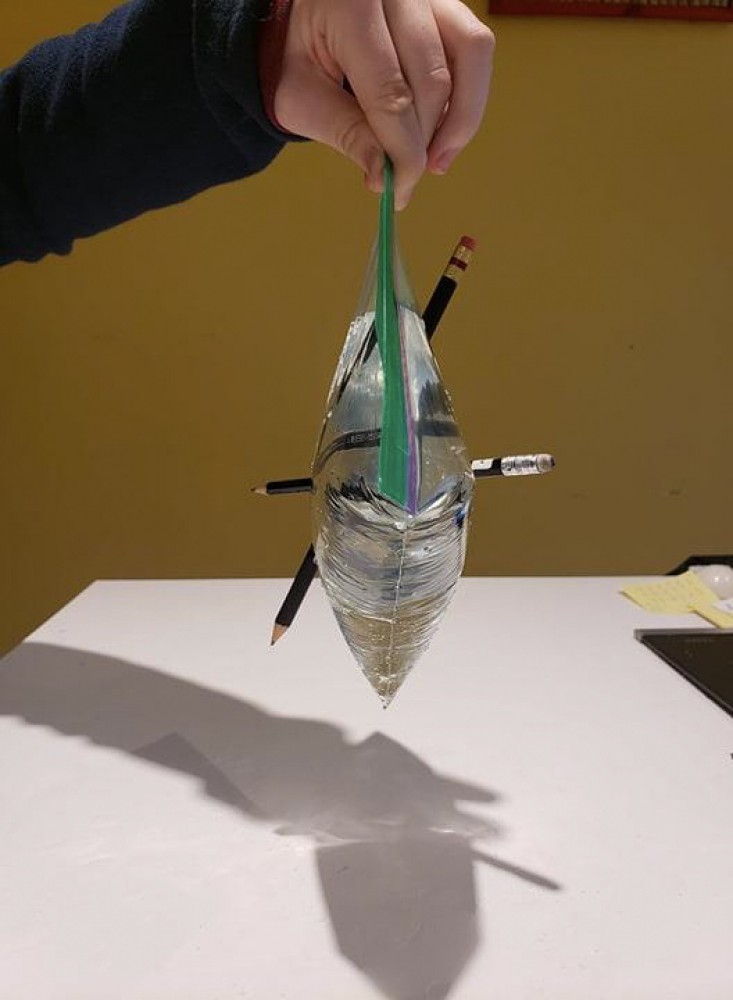
Have you ever stopped and took the time out of your day to notice the beautiful and perfect highlights that are on your local ducks? Its amazing how these animals are walking pieces of art with their wonderfully coloured feathers. It would take painters and artists hours to perfect such a technique to recreate such a colour scheme! Nature will always surprise you with its beauty no matter where you look.
Camera Type: DSLR
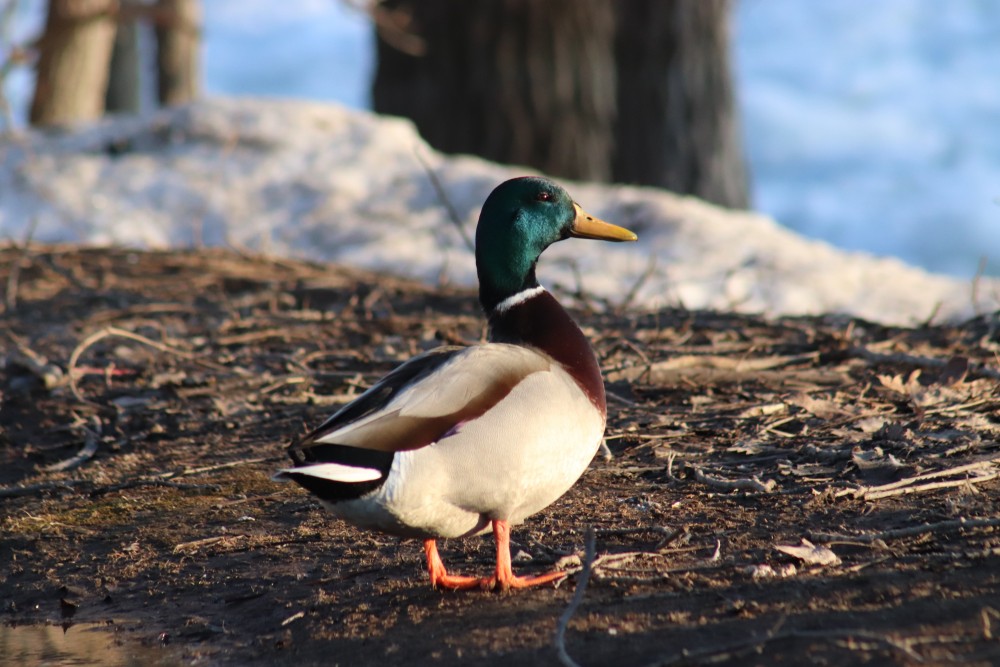
In this picture the driver is witnessing the visible light emitted by the sun as it rises. The rear-view mirror on the car is a convex mirror which is specifically designed and positioned to reflect light into the vision of the driver. The camera has been positioned at an angle to collect the reflected light rays. Since the convex mirror diverges light rays the driver witnesses a virtual image (the light is seen to be larger than it is actually).
Camera Type: Mobile
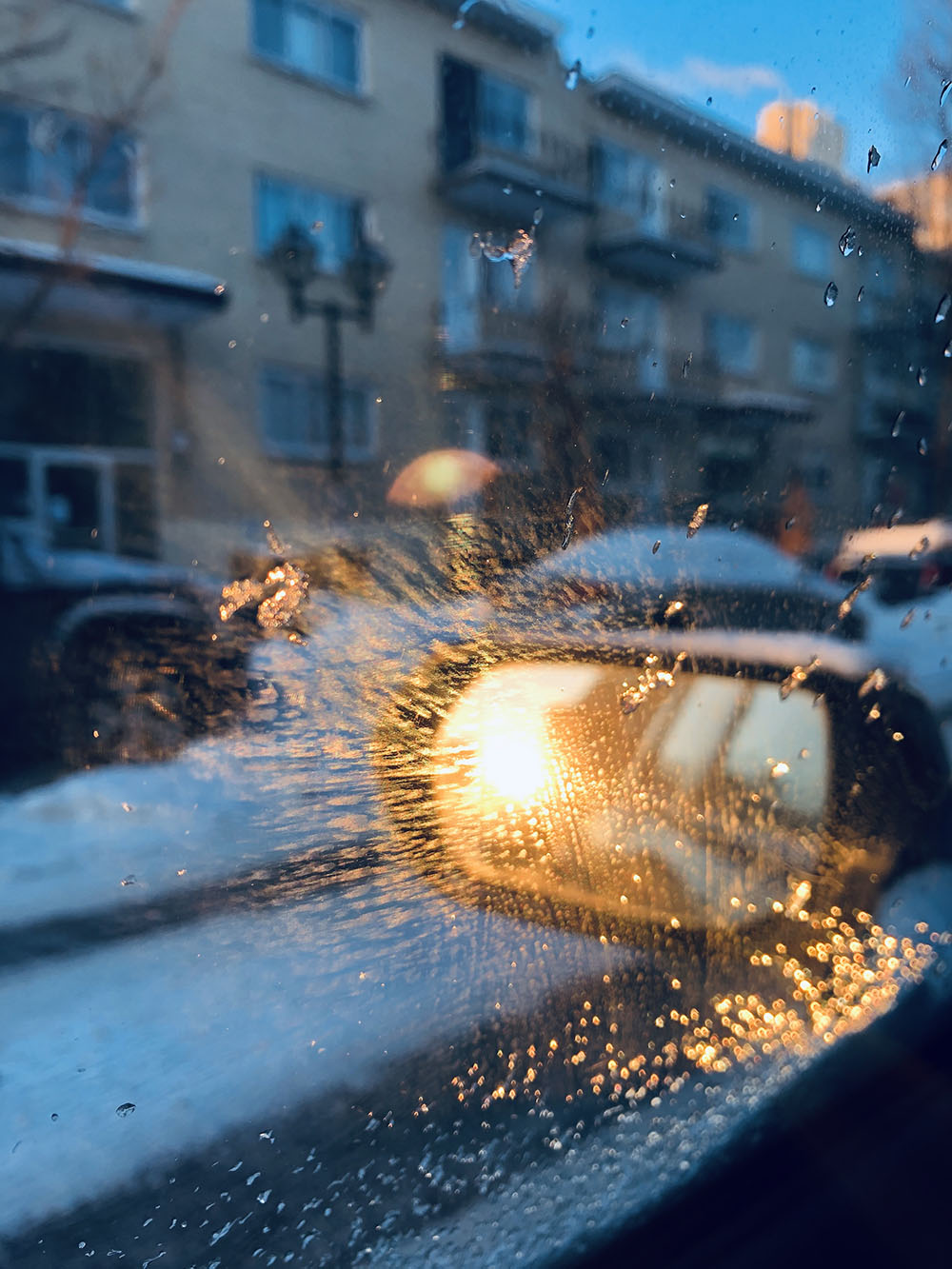
This image makes me think about the technique the trees and other plants use to survive the harsh conditions of winter when they do not have their leaves to actually produce energy. I did some research in order to understand how these organisms are able to get through winter and found out that they go in a kind of state similar to hibernation called dormancy in which their metabolism is completely slowed down in order to conserve energy. I thought that this fit with the S.P.A.C.E. theme this year where the term technique could mean a mean to survival.
Camera Type: Mobile
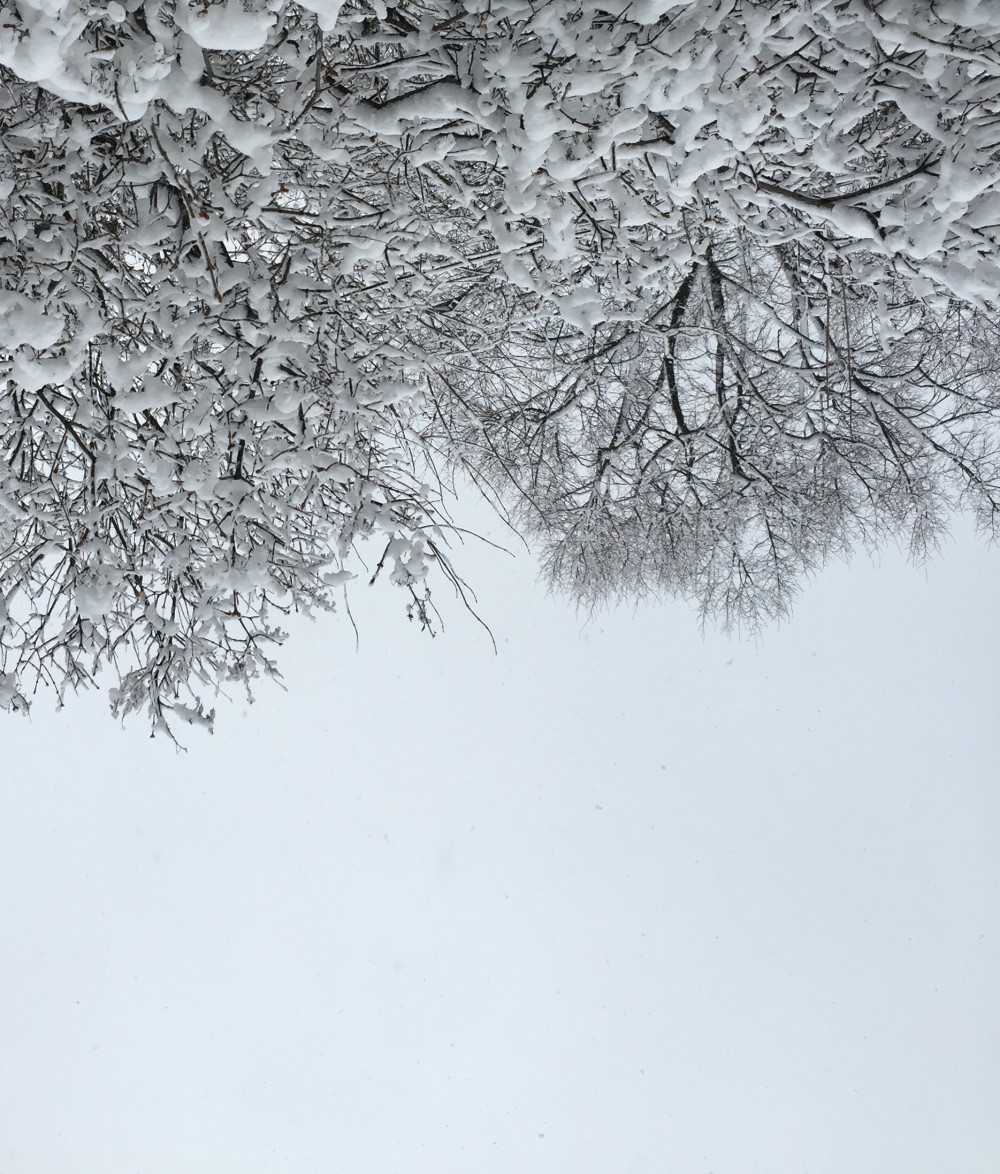
In order for candles to produce light, we first must provide an initial energy with a burning match. This energy is called the activation energy and leads to other events. First, the wax of the candle, composed of carbon compounds, begins to melt. As a result, the melted wax becomes liquid and thanks to the wick, it is able to go up the wick by flowing against gravity through a process called capillary action. Lastly, the heat given by the flame vaporizes the liquid wax into molecules of hydrogen and carbon. These molecules are then drawn up into the flame where they will combine with the oxygen in the air to create water vapour, heat, carbon dioxide and light. Looking at how things work closely is a technique for learning.
Camera Type: Mobile
